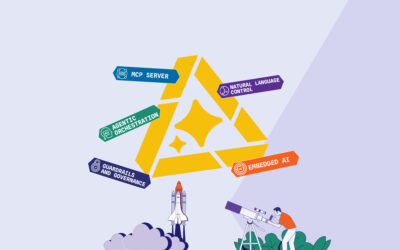See what experts from AbsenceSoft, LIMRA, Spring Consulting, and EIS have to say.
Today, many employers and insurers struggle with managing employee leave requests and claims with legacy systems designed for an earlier era when leave requests and leave-related claims were filed and processed separately.
This outdated technology, coupled with higher employee expectations for easier, more seamless digital experiences, is challenging employers as they seek to drive employee satisfaction, productivity, and profitability.
Our recent webinar, Aligning Absence Management with Modern Workforce Needs: An Employer’s Perspective, provides insights on these challenges, and how employers and carriers can address them.
Moderated by EIS Head of Global Benefits Anthony Grosso, the panel discussion also includes Seth Turner, Founder and Senior Advisor of AbsenceSoft, Karen English, National Absence Management Practice Leader at Sprint Consulting Group, and Kellie Benson-Bray, Director of Member Relations for Workplace Benefits at LIMRA.
The Big Challenges: Disconnected Processes, Regulatory Compliance, and Complexity
Drawing on insights from the recent AbsenceSoft report, The 2025 State of Leave and Accommodation, AbsenceSoft Founder and Senior Advisor Seth Turner noted that key challenges for employers addressing employee leave include:
- Higher employee expectations for seamless digital experiences
- The proliferation of leave types nationwide
- Rapidly evolving state-by-state regulatory requirements
Unfortunately, outdated legacy software solutions with rigid, inflexible workflows only make these challenges harder to handle — meaning employers, HR teams, and employees are left to manage both the leave requests and insurance claims on their own; making it a headache for everyone.
Employers, insurers, and TPAs have more work to do to meet the demands of constantly-evolving state and federal leave requirements. They must do this quickly across many different programs, and are limited by old processes and systems.
In addition, carriers, employers, and employees must also address the complexity of managing many different types of leave and absence claims. These processes can range from employees simply logging into an online app for a sick day, to creating a detailed incident report for a worker’s compensation claim, to meetings with managers and external third parties to file a disability claim.
In seeking to make the leave experience more employee-friendly and efficient, insurers and employers are looking for technology that makes it easier and faster for all parties to manage these protocols.
Bad Processes = A Negative Impact on Employees
A critical consequence of outdated technology systems and processes is the toll it takes on employees. Wasting time hunting for information or finding their way through complicated processes is incredibly frustrating — negatively impacting morale and employee performance.
In fact, data shows that employees who suffer a badly administered process often stay out on leave longer, and adopt a mentality of, “I’m going to take whatever benefit I can get and I’m not even going to help you while I’m out. I’ll see you when I get back.”
In contrast, when an absence process is smooth, employees are often happier and are back to work sooner, noting, as Karen English put it, “It really is a night and day difference.”
The Better Absence Management Approach: Shift Technology from Policies to People
Panelists in the webinar noted that a fundamental challenge of legacy software systems is that they were designed with an entirely different mission: “to manage processes and policies, and not people.” Today, employers, carriers, and TPAs are realizing that in order to provide a better employee leave experience, they need to start with processes and solutions that put people first.
One caution for employers and insurers undertaking transformation came from Kellie Benson-Bray from LIMRA. She noted that firms seeking to update legacy systems should carefully consider how they undertake that process.
Bray cited recent LIMRA research that revealed patchwork updates to legacy systems often result in additional manual processes and workarounds that can increase errors and can prove up to 77% more expensive than more comprehensive upgrades. In addition, a mix of automated and manual processes can exacerbate generational gulfs in the workplace. She asked, “How do I tell a millennial to fax a piece of paper for approval?”
AbsenceSoft Founder and Senior Advisor Seth Turner added that before an organization upgrades existing software, he suggests they “first ask themselves whether they want to try to build something new into a system that’s not designed to make it work.”
The panelists noted that a better path forward for most organizations seeking to drive substantive and effective improvement, is through modern, cloud-native solutions that are MACH-based (microservices-based, API-first, cloud-native, and headless). These systems can provide a cohesive, seamlessly integrated experience to employees and also deliver rapid time to value for insurers.
Empowering HR Employees With Better Technology
When it comes to meeting the absence and leave claim needs of employees, HR teams play a crucial role.
HR is responsible for providing employees with holistic information about all of their benefits, including the critical, time-sensitive information employees need to complete their leave claims in line with regulatory and company requirements. (Many times, this information is from disconnected programs and policies, making their job more difficult.)
But despite the importance of their role, HR employees are often handcuffed by siloed data, manual processes, and even duplicative workflows between employers and insurers.
Karen English noted that empowering HR employees with intuitive, seamless solutions that give them the right information at the right time helps them help employees manage leave filing and claims easily, efficiently, and in line with regulatory requirements.
Employee Satisfaction Takes Center Stage: Better Leave & Absence Processes as a Differentiator
Once seen as a cost center, today, leave and absence benefits are instead recognized as an important differentiator for employers seeking to recruit and retain the best talent.
Panelists noted that this shift, from regarding leave and absence benefits as an expense, to considering it as a way to differentiate their organizations and drive retention, is a critical development.
As a result, carriers and employers are now seeking to invest in technology that provides a more employee-centric, empathetic experience that meets employees where they are rather than the old process-centric, traditional approach to managing and administering leave.
Several panelists noted that research shows improving the employee leave experience pays dividends for employers. Citing survey data, Kellie Benson-Bray from LIMRA noted that 60% of employers agree that leave administration is a key focus for employee retention. In addition, employees who had a positive leave experience rated a 30% higher level of satisfaction with their employer.
Learn More About Improving Your Leave & Claims Process with Employers
Watch the on-demand EIS + AbsenceSoft Webinar: Aligning Absence Management with Modern Workforce Needs: An Employer’s Perspective.
Hear industry experts unpack what’s broken, what’s missing, why today’s standard systems just aren’t cutting it… and what you can do to differentiate your group benefits business as a go-to provider in the market.





